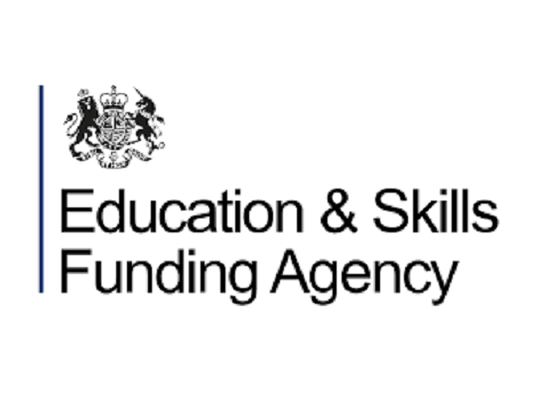Detailed guide: Pupil premium: funding and accountability for schools

How much pupil premium funding schools and non-mainstream schools receive, how they should spend it, and how we hold them to account.
The pupil premium grant is additional funding for publicly funded schools in England. It’s a school-level grant that gives schools extra resources to help them meet challenges, including those arising from deprivation.
It’s allocated for schools to:
- improve the academic outcomes of disadvantaged pupils of all abilities
- close the attainment gap between disadvantaged pupils and their peers across the country
You can find further information about the pupil premium in Pupil Premium Frequently Asked Questions (PDF, 174KB, 8 pages).
Which schools can receive funding
Pupil premium funding is available to:
- schools maintained by the local authority, including:
- schools for children with special educational needs or disabilities
- pupil referral units (PRUs), for children who can’t go to a mainstream school
- academies and free schools, including:
- academies for children with special educational needs or disabilities
- alternative provision (AP) academies, for children who can’t go to a mainstream school
- voluntary-sector AP, with local authority agreement
- non-maintained special schools (NMSS), for children with special educational needs as approved by the Secretary of State for Education under section 342 of the Education Act 1992
Using the pupil premium effectively
School leaders are best placed to decide how to use the pupil premium to improve disadvantaged pupils’ academic attainment. There is a growing body of evidence on how schools can best help disadvantaged pupils make progress.The needs of all pupils should be assessed and the grant used to make maximum impact in the school. Pupil needs will differ and will cost differing amounts to address.
There is no expectation that schools should spend the grant only on eligible pupils, or on a per eligible pupil basis.
Example£1,320 is allocated for each eligible primary age pupil counted in the school census. This does not mean that £1,320 extra has to be spent on every pupil.
When taking decisions on how to spend the grant we strongly encourage school leaders to consider evidence on what will have the most impact for their pupils.
Some of the most effective spending will be on whole school strategies, including improving the quality of teaching, which have the potential to impact positively on all pupils.
Pupil premium guide
To assist school leaders in this process, since 2011 the Education Endowment Foundation (EEF) has been working with thousands of schools across the country to establish what works best in raising pupils’ attainment. There is now a growing body of evidence on how schools can best help disadvantaged pupils make progress.The EEF has published a pupil premium guide that explains what schools have found works best when spending the pupil premium to improve results.
ExampleEvidence suggests that schools should consider using a ‘tiered’ approach to their pupil premium that balances spend across:
- supporting training and continuous development to improve the quality of all teaching
- targeting support for disadvantaged pupils through evidence-based interventions
- supporting whole-school strategies to improve attendance, behaviour and readiness to learn
Other sources of evidence
Other reports that schools may find helpful include:
- the EEF teaching and learning toolkit that ranks interventions and approaches by effectiveness and value for money
- the EEF families of schools database to help teachers learn about good practice from similar schools
- EEF guidance reports on high-priority topics
- the National Foundation for Educational Research that has recommendations for school leaders on raising disadvantaged pupils’ attainment
Ofsted has published reports on effective pupil premium strategies including:
Measuring the effectiveness of your approach
To measure the effectiveness of your pupil premium approach and spending, you should assess the performance of your disadvantaged pupils compared with the national average for non-disadvantaged pupils.
You may also wish to compare their disadvantaged pupils’ attainment to that of pupils in schools that:
- have similar cohorts
- face similar challenges
The families of schools database offers schools a user-friendly resource for this.
You are not required to compare or report within-school or within-class attainment gaps between disadvantaged pupils and their non-disadvantaged peers. School leaders are free to determine how they monitor their school’s progress.
Pupil premium reviews
You can commission an independent review of your pupil premium strategy to identify ways to use the funding more effectively.
Reporting and accountability
Schools are held accountable for the effectiveness of their pupil premium use:
- by publishing a pupil premium statement online
- through inspections
- through published performance tables
Pupil premium online statements
Schools maintained by the local authority must publish their strategy for using the pupil premium on their website.
You can find details of the specific information you need to publish in our guidance on what local-authority-maintained schools must publish online.
Most Academies and free schools are required to publish the same details. Their funding agreements will detail what they need to publish on their website. Guidance on effective practice for all academies and free schools is available.
A longer term strategy
From September 2019 schools are encouraged to move away from full annual reviews that can be time-consuming and instead consider a multi-year strategy – such as one covering a 3 year period – for pupil premium use, with light touch annual reviews that will continue to form the school’s pupil premium statement. This will help school leaders to:
- take a longer view of the support the grant will provide
- align their plan with the wider school improvement strategy
Doing this will give schools greater certainty when planning their:
- expenditure
- recruitment
- teaching practice
- staff development
The Teaching Schools Council has produced templates to help schools present their pupil premium strategy.
Ofsted inspections
Ofsted’s school inspections report on the attainment and progress of disadvantaged pupils who attract the pupil premium. Read the Ofsted inspection framework and handbook for more information.
The handbook clarifies that inspectors will not require:
- a school to provide any specific document relating to the pupil premium, other than its pupil premium strategy
- any further school-generated data on the pupil premium, including information related to spending on individual students or to within-class or within-school gaps
Performance tables
School and college performance tables report on the performance of disadvantaged pupils alongside their non-disadvantaged peers in state-maintained and all other schools.
Funding for financial year 2019 to 2020
In the 2019 to 2020 financial year, schools will receive the following funding for each pupil registered as eligible for free school meals (FSM) at any point in the last 6 years:
- £1,320 for pupils in reception to year 6
- £ 935 for pupils in year 7 to year 11
Schools will receive £2,300 for any pupil:
- identified in the January 2019 school census or the alternative provision census as having left local authority care as a result of:
- adoption
- a special guardianship order
- a child arrangements order (previously known as a residence order)
- who has been in local authority care for 1 day or more
- recorded as both eligible for FSM in the last 6 years and as being looked after (or as having left local authority care)
The funding for pupils who are looked after by a local authority, and attract the £2,300 rate, is managed by the virtual school head of the local authority that looks after the pupil.
Here are the pupil premium allocations for the 2018 to 2019 financial year. These were based on data from the January 2018 school census.
Allocations for the 2019 to 2020 financial year, based on the 2019 census, will be confirmed at the end of June 2019.
You can find more information about the terms of the funding in the conditions of grant document.
Payments in the 2019 to 2020 financial year
Payments for local authority maintained schools (including special schools and PRUs) and NMSS
We pay pupil premium funding to your local authority in quarterly instalments, and they pass the funding on to you.
In the 2019 to 2020 financial year, we’ll pay pupil premium funding to local authorities on:
- 28 June 2019
- 30 September 2019
- 30 December 2019
- 31 March 2020
Payments for academies and free schools (including special academies and AP academies)
We pay pupil premium funding to academies and free schools in quarterly installments.
In the 2019 to 2020 financial year, we’ll pay pupil premium funding to academies and free schools on:
- 09 July 2019 – for academies open at 1 April 2019
- 08 October 2019 – for academies open at 1 April 2019
- 09 January 2020 – for academies open at 1 September 2019
- 08 April 2020 – for academies open at 1 January 2020
Published 25 March 2014
Last updated 17 June 2019 + show all updates
- Updated for the financial year 2019 to 2020 and added further information about how schools should plan to use the funding.
- Updated funding and payments information for the 2018 to 2019 financial year.
- Updated to include information on pupil premium for financial year 2017 to 2018.
- Updated information on pupil premium reviews and what information schools need to publish on their websites.
- Updated information on 2016 to 2017 allocations and payment dates.
- Updated Ofsted inspection framework link under the ‘Accountability’ heading.
- Removed outdated information about Pupil Premium Awards.
- Updated with links to final 2015 to 2016 funding allocations.
- Updated with links to final allocations for 2014 to 2015 and provisional allocations for 2015 to 2016.
- Added details of pupil premium allocations and payment dates. Also updated information on accountability.
- Added information about pupil premium funding for the 2015 to 2016 financial year.
- Added information about the 2015 Pupil Premium Awards.
- First published.












Responses